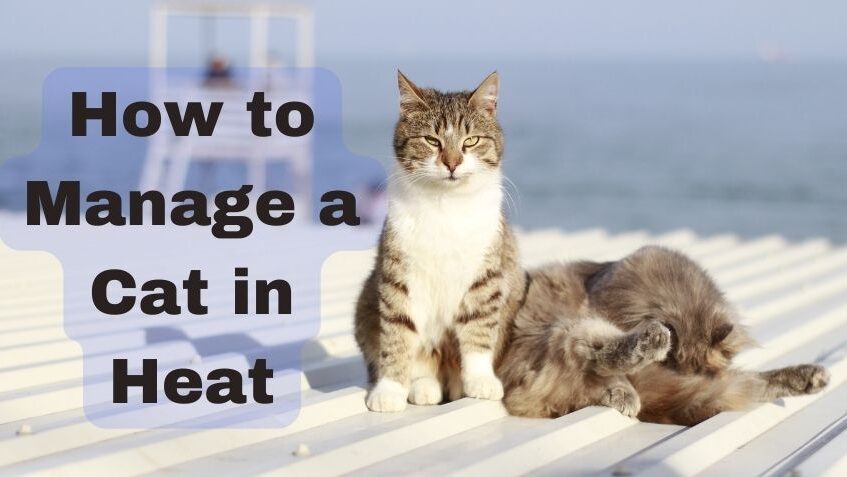How to Manage a Cat in Heat
A cat in heat can be difficult to live with. And because your cat’s behavior is absolutely normal, don’t try to search for a “cure.” Yes, it is possible to use vet-prescribed synthetic progesterone injections to ward off heat and save both your cat and yourself from these symptoms. But frankly, spaying is a better choice and a more permanent option
If you do intend to breed her and just need to get through these cycles, provide your cat with toys or pillows that she can shred while she’s in heat, and play with her often. Make her a nest with a warm heating pad for privacy and offer her catnip to calm her down. If things seem to escalate and she becomes troublesome, stress-relieving herbs, made especially for pets and found at your local health food store, might work as a last resort.
Like most female mammals, cats go through physical cycles that prepare their bodies for fertilization and birth. In humans, this cycle is called the “menstrual cycle.” In felines, it is called the “estrous cycle.”
When female cats are experiencing estrus they are said to be “in heat” and are hormonally receptive to both intercourse and reproduction. Cats can go into heat in late kittenhood. Thus, it’s necessary to spay them if a pregnancy is unwanted, or the responsibility of raising and finding good homes for kittens is undesirable.
Heat Cycles in Cats
Cats are seasonally polyestrous, which means that heat cycles can occur repeatedly every 14-21 days during a given breeding season.1 These cycles may start as early as four months of age and will continue until a cat is either bred or spayed. Heat or estrus in cats can last on average from six to eight days, and repeat every one to three weeks. It’s easy to see, then, how a female cat almost always seems to be in heat. Thus, many veterinarians practice early spay and neuter.
When your cat is in heat, it’s a noticeable event. And while it’s hard to prove that heat cycles aren’t painful, the calling (or loud howling) she exhibits make her seem to be uncomfortable. However, a female cat’s howling has a purpose—to attract the attention of a potential suitor. Recognizing this fact can ease your worry about something being wrong, or “off,” with your pet.
Timing Is Everything
With the arrival of spring, a female cat in her sexual prime will begin a heat cycle. The longer days, filled with warmth and sunlight, trigger the breeding season. This first heat of the season usually lasts about a week. Then, if a pregnancy isn’t achieved, she may go back into heat a few weeks later and continue this pattern until she becomes pregnant. If she mates during this time and becomes pregnant, she will go back into heat approximately eight weeks after the kittens are born, or just after they are weaned.1 But if your cat mates and doesn’t get pregnant, a false pregnancy may ensue where she exhibits the signs of pregnancy briefly, before going back into estrus four to six weeks later.
How to Manage a Cat in Heat
A cat in heat can be difficult to live with. And because your cat’s behavior is absolutely normal, don’t try to search for a “cure.” Yes, it is possible to use vet-prescribed synthetic progesterone injections to ward off heat and save both your cat and yourself from these symptoms. But frankly, spaying is a better choice and a more permanent option.2
If you do intend to breed her and just need to get through these cycles, provide your cat with toys or pillows that she can shred while she’s in heat, and play with her often. Make her a nest with a warm heating pad for privacy and offer her catnip to calm her down. If things seem to escalate and she becomes troublesome, stress-relieving herbs, made especially for pets and found at your local health food store, might work as a last resort.
You may also visit – https://www.facebook.com/angkopparasahayop




